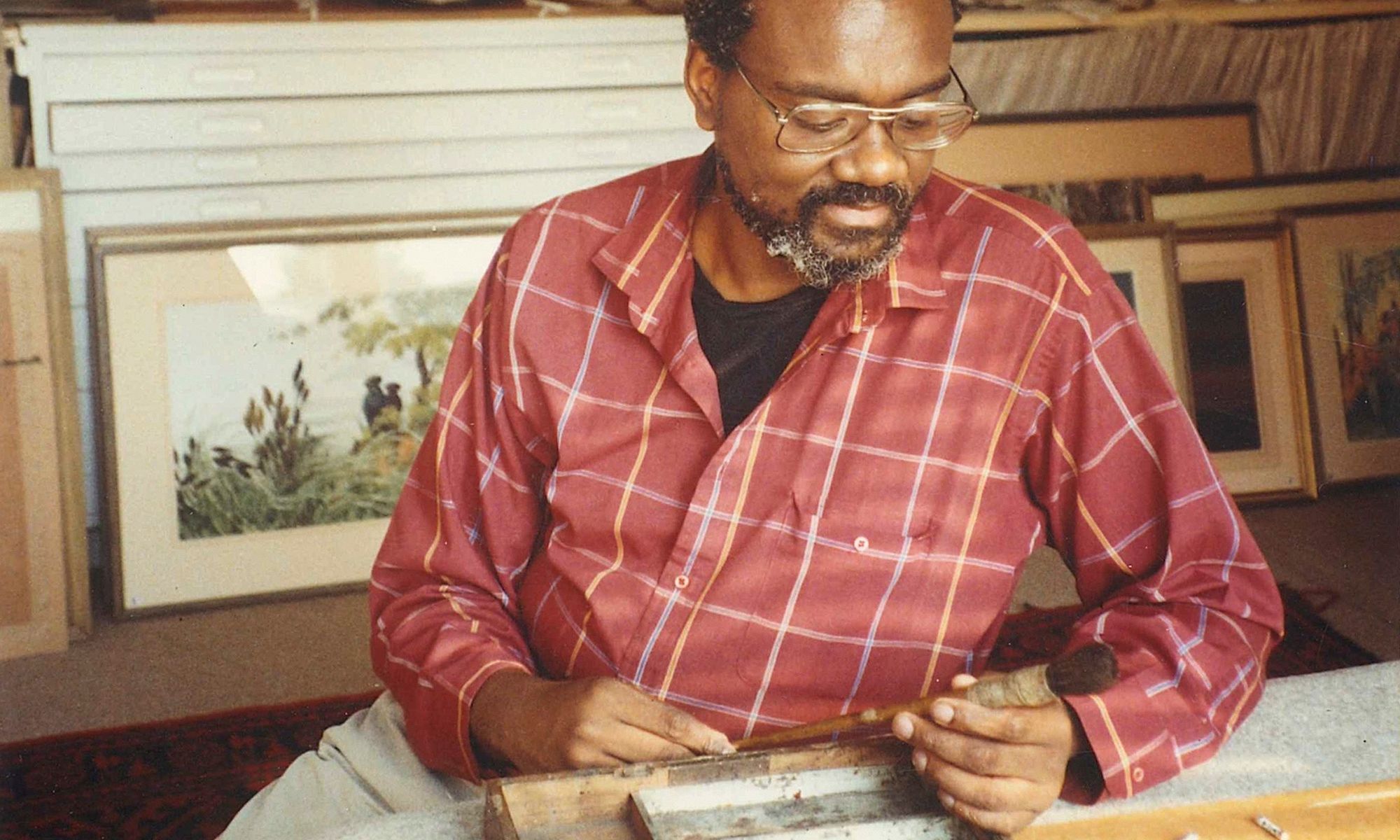Jesse Murry with John Constable’s paint brushes, Somerset, England, 1991. Photograph by Richard Constable. Courtesy of The Jesse Murry Foundation.
When the artist Jesse Murry died, in 1993, at the age of 44, his partner George Centanni packed up the contents of his studio with Murry’s close friend and fellow painter Lisa Yuskavage. In recent years, Murry’s abstract paintings—dense terrains of luminous colour and sweeping strokes—have been exhibited in galleries including David Zwirner, and selections of his writing have been published. But only now is his full archive of poems, criticism, sketches, teaching notes and more being fully revealed and examined, thanks to a project spearheaded by Hauser & Wirth Institute, the nonprofit foundation that provides free resources to preserve artists’ archives.
“Things are kept safe all these years out of love and luck,” says Yuskavage, who is secretary of the Jesse Murry Foundation. “It’s almost like somebody’s taking what is a disorganised, untidy mess and making it so that when we hand it over to an institution, they don’t have to, you know, fold the laundry.”
Murry’s archive is one of three that Hauser & Wirth Institute is beginning to process this year at its facilities in Long Island City, Queens, readying the materials for easier access. Its team is also handling the entire institutional archive of Brooklyn-based papermaking organisation Dieu Donné and a portion of the Drawing Center’s. The newly announced in-house archival efforts are part of a nascent programme at Hauser & Wirth Institute that offers cataloguing, preservation and digitisation services to those in the arts who lack those resources. In addition, the Institute earmarks grants for organisations to increase access to their archives on their own terms.
Cannupa Hanska-Luger working at Dieu Donné’s studio. Image courtesy of the artist and Dieu Donné, New York. Photo by Melody Melamed
These opportunities aim to remedy a problem many artists and arts organisations, particularly small and mid-size ones, face: an inability to store and share their growing records amid tightening budgets, skyrocketing real-estate prices and advancing technologies that render certain media obsolete.
“The whole art world is devoted to artworks, and hardly anyone is devoted to archives,” says Lisa Darms, executive director of Hauser & Wirth Institute. “So few organisations even have archivists. It’s not often work that’s recognised. Often if there’s some sort of downturn in the economy, the archives project or person will be the first to go.”
The Drawing Center does not have an archivist on staff, and the job of handling research queries tends to fall to its curatorial associate. Because its materials are kept off-site in a storage space in New Jersey, accessing the hundreds of boxes of the institution’s exhibition history, photo slides, artists’ correspondences and more is a challenge.
"The Drawing Center's archive comprises vital material pertaining to the organisation's history and activities, which at the moment remains largely inaccessible," says Laura Hoptman, the Drawing Center's executive director. "We are thrilled to partner with Hauser & Wirth Institute in an endeavour that will be transformative for not only the Drawing Center but also for generations of scholars to come."
Given the varying sizes and natures of archives, Hauser & Wirth Institute’s processing efforts look different for each project. Darms is helping the Drawing Center secure a permanent, research-friendly home for its materials; a fellow funded by Hauser & Wirth Institute will digitise a relatively small set of 30 binders, and the receiving institution will eventually process the remainder.
“We can think of no more appropriate way to celebrate a half a century of provocative, enlightening exhibitions and publications than to archivally preserve our history and make it available to a wider public,” Hoptman adds, looking ahead to the institution's 50th anniversary in 2027.
Sol LeWitt exhibition at the Drawing Center, 19 November 1977-14 January 1978 Courtesy of The Drawing Center
Once processed, Dieu Donné’s archives will return to that organisation to provide access directly from its offices. “Because part of our mission is to support autonomy in the archiving of organisations’ records, rather than assuming that all records should go to collecting libraries, we give people the choice as to whether they’d like to keep their archives in-house to maintain control and provide access, or donate to a collecting institution that has the resources to assure permanent preservation and access,” Darms says. “When we return an archive to its creator, we only do so when we feel confident that organisation has the capacity and commitment to making the archives accessible to the public.”
Murry’s archive is small, reflecting his too-short career—four boxes of his correspondence and notebooks—and has yet to find a permanent home. Ultimately, Yuskavage hopes to fulfill his goal of opening a teaching center at a university or library where people will have open access to his writings. Bringing his archive to light after decades, she adds, might also compel others to share material with the Jesse Murry Foundation that further illuminates who the late artist was, and help grow this trove.
“It is extraordinary the life that he led, so I just keep on asking, What else is out there?” says Yuskavage. “There must be more—and that’s what I’m hoping will happen from what we’re trying to get going.”

